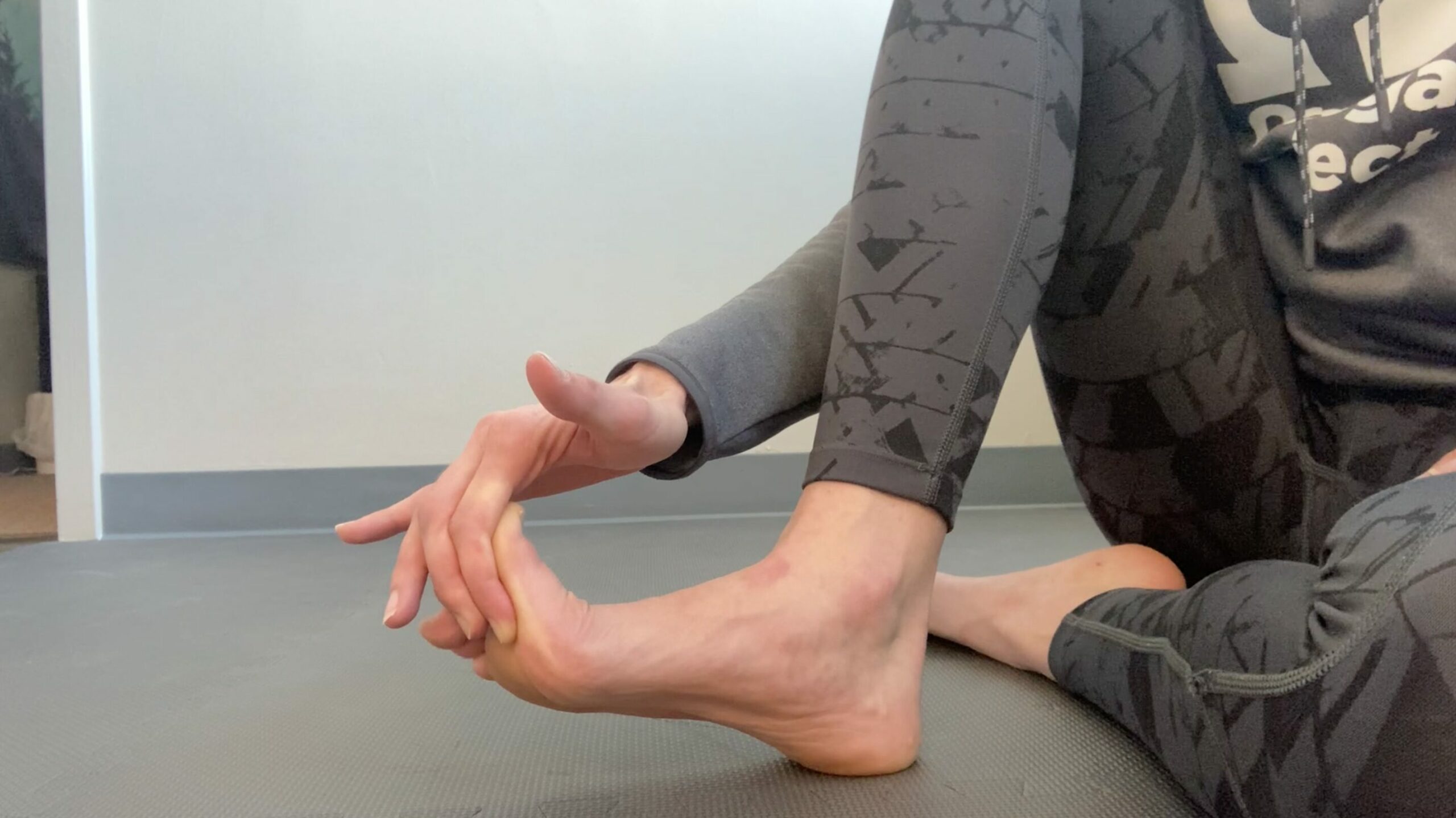When we see runners with injuries, two of the more common mobility limitations are ankle dorsiflexion (foot up toward your nose) and great toe extension (toe up toward your nose).
Both ankle and great toe mobility affect our ability to move our body over our foot during the stance phase of gait. If we can’t achieve this mobility, we often compensate in a deleterious way. One of the signs (but not the only one) might be a callus formation along the inside of the big toe where the toe rubs against your shoe. If we can’t come straight off the toe, the heel whips inward and we roll off the inside of our toe. This is similar to overpronation.
While pronation (collapsing of the arch) is normal during midstance, we are supposed to be able to recover the stability of our foot (supination) by the time we take off. This allows for a powerful push-off and good alignment for the rest of your gait cycle.
At times, we lose mobility first, and then compensations ensue. At other times, we may be overpronating due to other reasons (ankle mobility, weakness in the hips) and we lose great toe mobility because we don’t use it.
Everything mentioned above is not only a cause of limited great toe mobility but also the primary cause of bunions.
The primary goal of today’s message is to show you some exercises on how to improve great toe mobility. See the videos below for some of our go-to exercises for improving great toe mobility!
Some things to know before you mobilize:
1. If you have a bunion, you will likely want to consult an expert to make sure the exercises shown below are helpful and not harmful. It can be case-by-case.
2. In some cases, the great toe joint has become arthritic and stiff enough that it is best to leave it alone. Trying to increase mobility will cause more pain. In these situations, we recommend lower drop shoes, rocker bottom shoes, and/or carbon plated shoes. These types of shoes allow you to normalize your gait without requiring as much great toe mobility.
Ok, let’s get the toe moving!

